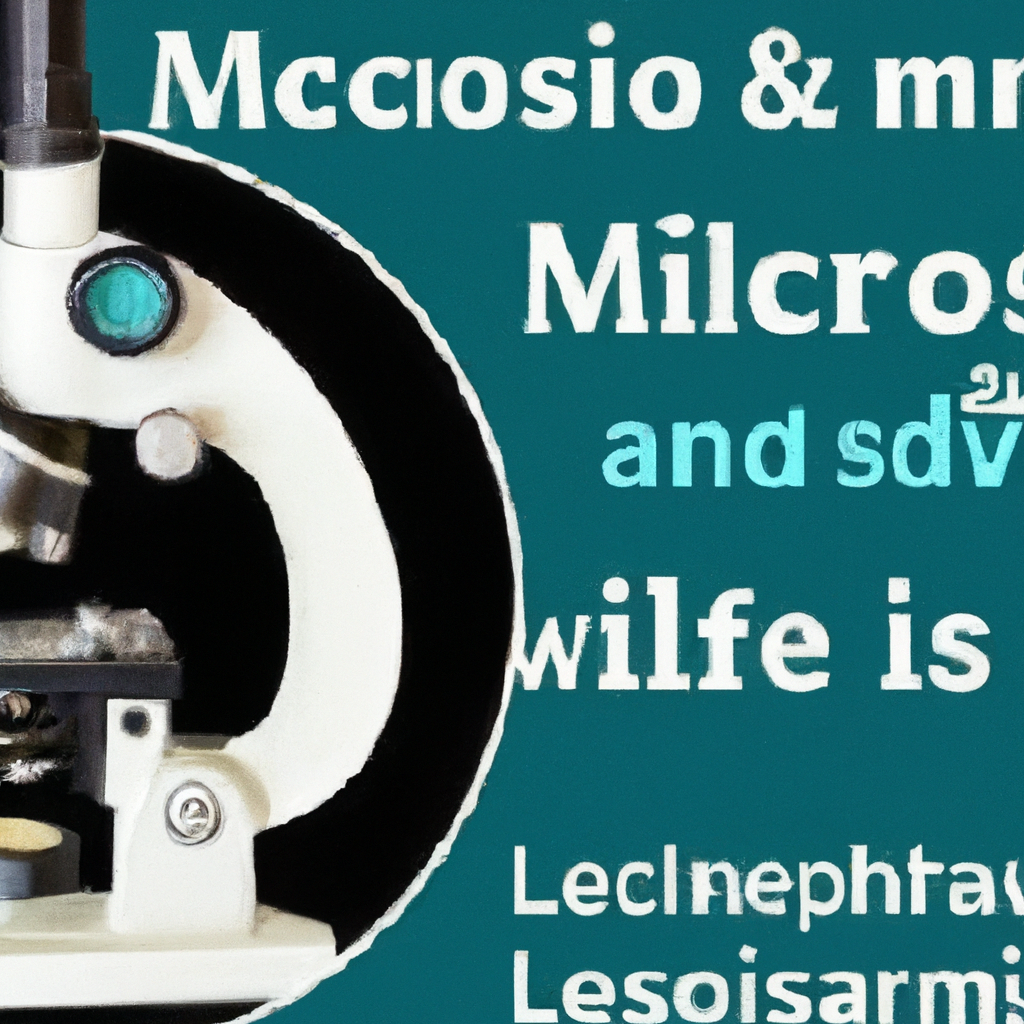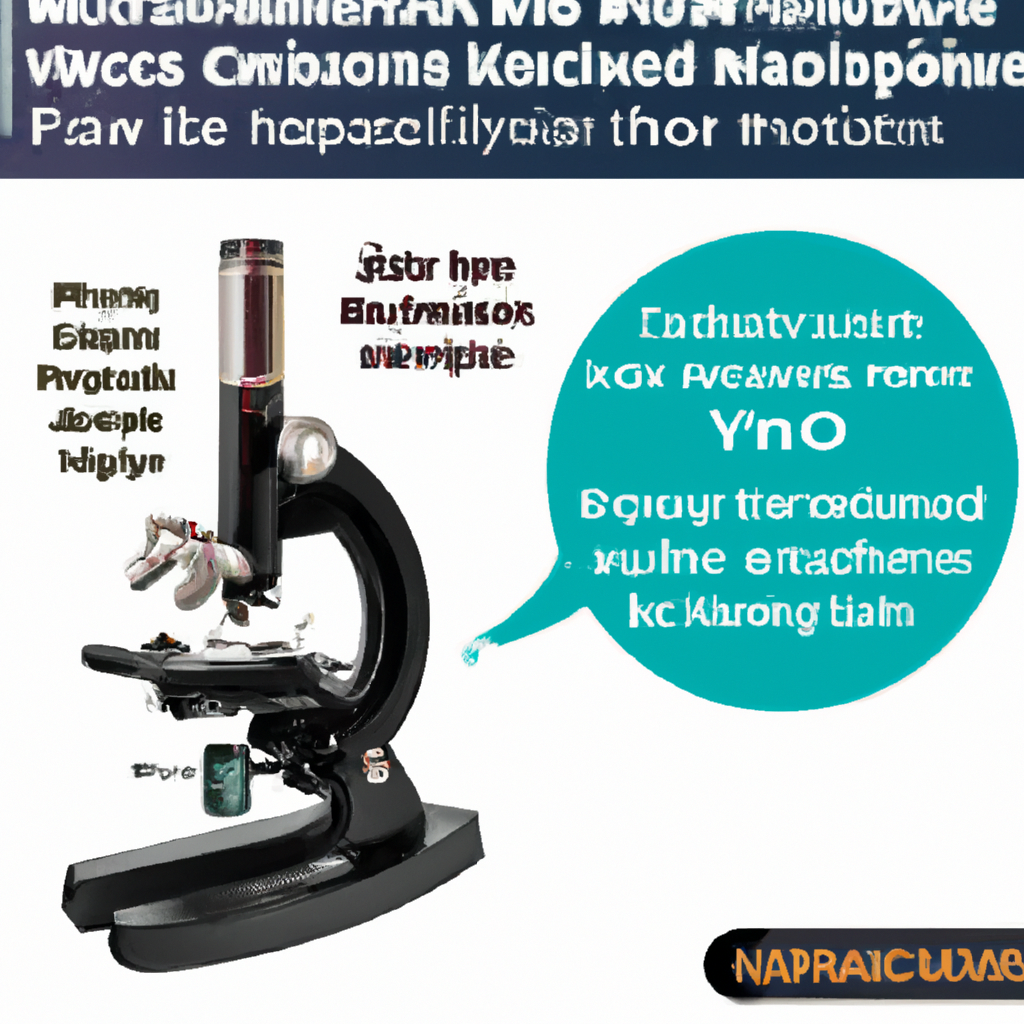Whether you’re a science enthusiast or a curious learner, it’s worth understanding the distinction between a microscope and a digital microscope. While both instruments allow us to explore the microscopic world, they possess unique features and abilities that set them apart. This article will shed light on the differences between these two powerful tools, providing you with a clearer understanding of their distinct roles and capabilities. So, get ready to embark on a fascinating journey into the world of microscopy as we unravel the mystery behind the microscope and the digital microscope.
Magnification and Resolution
Magnification
When it comes to magnification, both traditional microscopes and digital microscopes are capable of providing high levels of magnification to examine minute details. Magnification refers to the ability to make objects appear larger than they actually are. Traditional microscopes typically have a range of magnification options that can be achieved by changing the objective lenses. This allows for a wide range of magnification levels, from low magnifications suitable for observing larger specimens to high magnifications for studying cellular structures. Similarly, digital microscopes also offer a range of magnification options, but they achieve this digitally rather than through the use of physical lenses.
Resolution
Resolution is another important aspect to consider when comparing microscopes and digital microscopes. Resolution refers to the level of detail that can be observed and distinguished in an image. Traditional microscopes generally have excellent resolution, and the quality of the image is primarily dependent on the optical elements of the microscope and the lenses used. On the other hand, digital microscopes have the advantage of being able to capture and display high-resolution images directly on a screen, thanks to advanced imaging sensors and digital processing. This allows for clear and highly detailed images, providing a digital advantage over traditional microscopes.
Optics
Traditional Microscope Optics
Traditional microscopes rely on a complex system of optical components that work together to produce a magnified image. This includes the use of lenses, mirrors, and diaphragms. Light from a source is focused through the microscope’s condenser, which helps to illuminate the specimen evenly. The light then passes through one or more objective lenses, which further magnify the specimen. Finally, the image is viewed through the eyepiece, which provides additional magnification. The quality of the optics plays a crucial role in determining the clarity and resolution of the final image.
Digital Microscope Optics
Digital microscopes, on the other hand, utilize a combination of optics and digital imaging technology. The optics in digital microscopes serve to capture the image of the specimen, which is then transferred to an imaging sensor. This sensor converts the captured light into a digital signal, which can be processed and displayed on a screen. The use of digital imaging allows for real-time adjustments to the image, such as zooming and focusing, without the need to physically adjust lenses. Additionally, digital microscopes often have built-in features such as image stabilization and contrast enhancement, further improving the quality of the captured images.

Image Capture and Storage
Image Capture
Traditional microscopes rely on the direct observation of the specimen through the eyepiece or by using a camera attachment. To capture images using a traditional microscope, a camera must be attached to the eyepiece or positioned at a suitable point in the optical path. This can be a cumbersome process and may require additional accessories. On the other hand, digital microscopes have built-in image capture capabilities, allowing images to be directly captured by the imaging sensor. This makes image capture easy and efficient, without the need for additional equipment or adjustments to the microscope setup.
Image Storage
When it comes to storing the captured images, traditional microscopes often require external cameras or other storage devices to save the images. The images captured by the external camera must be transferred manually, which can be time-consuming and may result in data loss or corruption. In contrast, digital microscopes have the advantage of built-in image storage capabilities. This means that captured images can be saved directly to internal memory or external storage devices such as USB flash drives or memory cards. The ability to store images directly on the microscope simplifies the process and ensures that valuable data is not lost.
Image Display
Traditional Microscope Image Display
Traditional microscopes display images through the use of the eyepiece, which provides a magnified view of the specimen to the observer. This allows for direct observation and analysis of the image. However, the image can only be viewed by one person at a time, making it difficult for collaborative work or teaching purposes. Additionally, the size of the viewed image is limited by the eyepiece and may not be suitable for detailed analysis or sharing.
Digital Microscope Image Display
Digital microscopes offer a more versatile image display system. The captured images can be displayed directly on a screen, such as a computer monitor or a built-in display on the microscope itself. This allows for multiple people to view the image simultaneously, facilitating collaborative work and educational purposes. Furthermore, digital microscopes often have advanced image processing capabilities, allowing for image enhancement, zooming, and annotation. These features greatly enhance the experience of analyzing and sharing images, making digital microscopes a valuable tool in various fields.

Ergonomics and Portability
Ergonomics of Traditional Microscopes
Traditional microscopes are often designed with ergonomic considerations in mind. They are typically equipped with adjustable components such as the stage height and the eyepiece positions, allowing users to optimize their viewing experience. However, prolonged use of traditional microscopes can be physically demanding, as users are required to maintain a specific posture and position for extended periods. This can lead to discomfort and fatigue, especially during long observation or research sessions.
Ergonomics of Digital Microscopes
Digital microscopes offer improved ergonomics compared to their traditional counterparts. They are often designed with adjustable screens and viewing angles, allowing users to comfortably view the images. Additionally, some digital microscopes offer wireless connectivity, enabling users to view the images on a separate device, such as a tablet or a smartphone, providing further flexibility in terms of viewing position and posture. The enhanced ergonomics of digital microscopes contribute to a more comfortable and less physically taxing microscopy experience.
Portability
When it comes to portability, digital microscopes have a clear advantage over traditional microscopes. Digital microscopes are typically compact and lightweight, making them easily transportable. Some models even offer battery-powered operation, eliminating the need for a power source. This portability makes digital microscopes ideal for fieldwork or situations where mobility is required. Traditional microscopes, on the other hand, are generally bulkier and often require a stable surface and a power source, making them less suitable for on-the-go applications.
Cost
Cost of Traditional Microscopes
The cost of traditional microscopes can vary considerably depending on the quality, features, and brand. Entry-level microscopes suitable for educational purposes can be relatively affordable, with prices ranging from around $100 to $500. However, as the magnification, resolution, and quality of components increase, so does the cost. High-end research microscopes can cost thousands or even tens of thousands of dollars, particularly when specialized features or advanced imaging capabilities are involved. Additionally, the cost of maintaining and replacing optical components and accessories should also be considered.
Cost of Digital Microscopes
Digital microscopes often offer a more cost-effective solution compared to traditional microscopes, especially when considering the additional functionalities they provide. Entry-level digital microscopes can be found at prices as low as $50, providing basic imaging capabilities suitable for educational purposes. Higher-end digital microscopes, with more advanced features and image processing capabilities, can range from $500 to several thousand dollars. While digital microscopes may have a higher upfront cost compared to some entry-level traditional microscopes, they often offer long-term savings by eliminating the need for external cameras or additional accessories.
Applications
Traditional Microscope Applications
Traditional microscopes have been widely used in various scientific disciplines, such as biology, chemistry, and materials science. They are essential tools for studying cellular structures, microorganisms, and analyzing microscopic features in a wide range of samples. Traditional microscopes are also commonly used in medical laboratories for diagnostic purposes, allowing healthcare professionals to examine cells and tissues for abnormalities. In addition to scientific and medical applications, traditional microscopes find use in industries such as forensics, environmental science, and quality control.
Digital Microscope Applications
Digital microscopes have expanded the range of applications where microscopy is beneficial. The ability to capture and display high-resolution images in real-time makes digital microscopes useful in fields such as education, where detailed visualization and sharing of microscopic specimens are vital for learning. Digital microscopes are also valuable tools in fields like jewelry and gemology, where precise observation of small details is crucial. In manufacturing and quality control, digital microscopes enable efficient and accurate inspection of components and surfaces, while in art and conservation, they aid in the examination and analysis of delicate and valuable artifacts.
Advantages
Advantages of Traditional Microscopes
Traditional microscopes offer several advantages that make them indispensable in many scientific fields. Firstly, their optics provide excellent image quality and clarity, allowing for detailed examination and analysis of specimens. Traditional microscopes also offer a wide range of magnification options, which can be easily adjusted by changing objective lenses. Furthermore, traditional microscopes have a long-standing presence in scientific research, resulting in a vast selection of specialized accessories and components, making them adaptable to various needs and applications.
Advantages of Digital Microscopes
Digital microscopes bring numerous advantages to the microscopy field. The ability to capture and display high-resolution images directly on a screen simplifies the process of image analysis and sharing. Digital microscopes often offer advanced features such as image recording, time-lapse imaging, and measurements, enabling researchers to document and track changes in specimens over time. The portability of digital microscopes also makes them ideal for fieldwork and on-site inspections. Additionally, the integration of digital imaging technology allows for easy connectivity and compatibility with other digital devices, facilitating data analysis and sharing.
Disadvantages
Disadvantages of Traditional Microscopes
While traditional microscopes have been a staple in the scientific community, they do have some limitations. Traditional microscopes can be physically demanding to use for extended periods due to the need to maintain a specific position and posture. The process of capturing images using traditional microscopes can also be cumbersome, requiring the use of external cameras or complex camera attachments. Additionally, traditional microscopes may have limited functionality when it comes to real-time image processing or digital manipulation of images.
Disadvantages of Digital Microscopes
Despite their numerous advantages, digital microscopes also have a few disadvantages. The reliance on digital technology means that digital microscopes may be susceptible to technical issues such as hardware or software malfunctions. In some cases, the image quality of digital microscopes may not match the level of clarity and detail provided by high-end traditional microscopes. Additionally, the small image sensors commonly used in digital microscopes may limit their ability to capture images in low-light conditions or when observing specimens with low contrast.
Conclusion
In conclusion, both traditional microscopes and digital microscopes offer valuable tools for magnification, observation, and analysis of microscopic specimens. While traditional microscopes excel in providing excellent optics for detailed examination, digital microscopes offer the advantages of real-time imaging, image capture, and digital manipulation. The choice between traditional microscopes and digital microscopes ultimately depends on specific requirements, applications, and preferences. Traditional microscopes remain essential tools in scientific research laboratories, medical diagnostics, and various industrial fields, while digital microscopes are revolutionizing microscopy by providing enhanced imaging capabilities, improved ergonomics, portability, and connectivity. With ongoing advancements in technology, the future of microscopy is undoubtedly exciting, with the potential for even more innovative and versatile tools to advance research and education.




